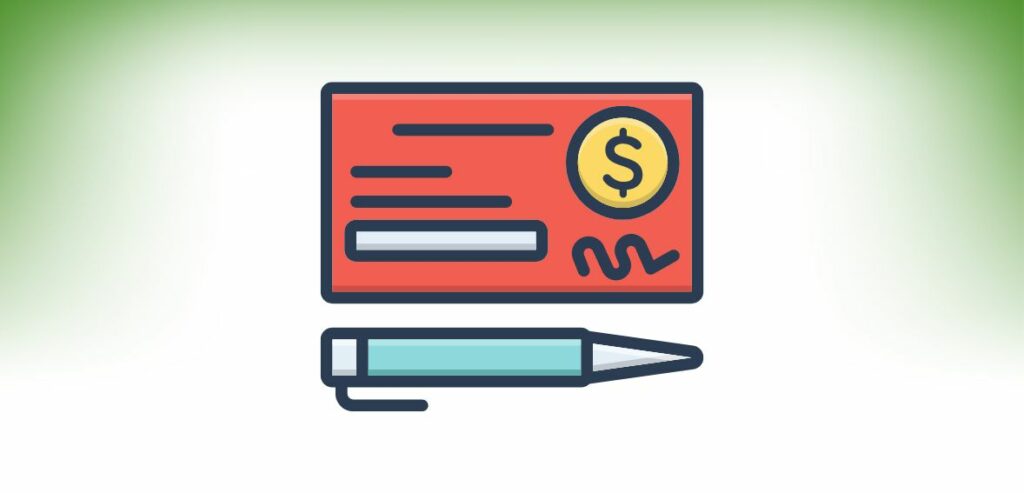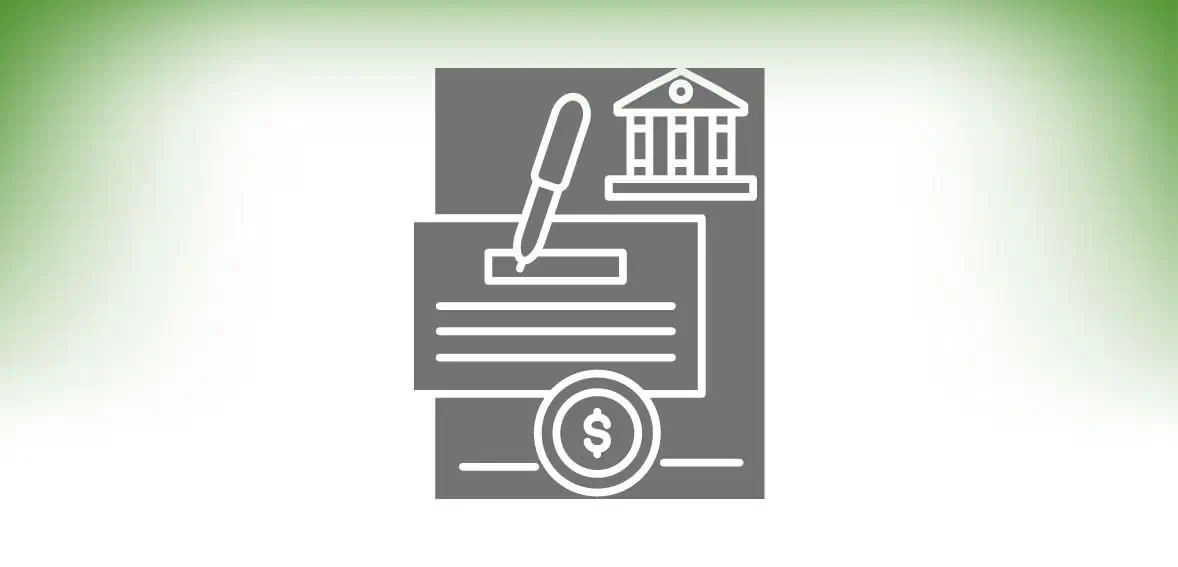Reconciling and handling customer payments stands as a crucial task for companies, regardless of their size. Nowadays, digital banking tools and online payments have streamlined this process for the most part, making it easy and accurate. However, some customers still prefer traditional paper checks, which is a challenge for companies to identify the source of payments and link them to specific invoices. To assist with this challenge, banks offer a system known as lockbox banking. In this arrangement, banks receive check payments on behalf of a company and subsequently provide information to the company for easier accounting.
Many companies leverage lockbox services to significantly simplify payment reconciliation. However, businesses employing this option often seek ways to enhance their integration with accounts receivable. Despite banks consolidating information on incoming check payments into a single data file, the task of matching payments to open invoices can still be time-consuming, tedious, and prone to errors for finance teams. This article discusses the workings of lockbox banking, exploring how it operates and providing insights into optimizing its functionality for your company in an easy-to-understand manner.
What Exactly Is Lockbox? Let Us Understand
Lockbox banking service, also referred to as a remittance service, is a method employed by banks to alleviate the payment collection burden on businesses. In this process, banks collect payments, particularly checks but also can include cash, on behalf of their business clients. The lockbox serves as an official drop-off where businesses direct their customers’ physical payments. The bank then gathers and processes these payments.

By implementing a per transaction or monthly fee, banks not only generate additional revenue but also save their clients considerable time and effort associated with collecting physical payments.
The are multiple drop-off locations across the country set by and handled by the Banks, and businesses often utilize multiple lockboxes across different regions. So, consider a scenario where a B2B retail business operates from Baltimore, but its customer base predominantly resides in Southern California. In such a case, it makes strategic sense for the business to have lockboxes in locations like Los Angeles or San Diego. This way, customers can write a check, and send it to the designated drop-off point on the same day, and the bank in that region—let’s say LA—can swiftly process it. This streamlined process not only takes just a few hours but also reduces overall payment processing time.
How Does The Whole Lockbox Banking Process Works?
Banks operate numerous lockbox locations across the country, enabling counterparties to send paper checks or even cash to a nearby address instead of directly to a business’s main location.
At the close of each day, bank employees collect the contents of lockboxes and transport them to large processing facilities. Here, they open, scan, and deposit the checks into their designated bank accounts. To keep businesses informed about the received checks, banks send out daily lockbox files containing images and data associated with each payment, along with notifications of any bounced or returned checks.

Consider our previous example of a B2B retail business based in Baltimore. Despite being located in Baltimore, the business strategically utilizes the bank’s lockbox services in locations like LA, San Diego, and Washington. This enables them to systematically handle checks coming in from various parts of the country without waiting for vendors to send payments across the entire nation. Instead, vendors can send their payments directly to the designated lockboxes.
At the end of each day, representatives from the bank collect the checks, process them, and deposit the payments directly into the B2B retail business’s banking account. The payment information is then captured and forwarded to the business’s accounts receivable department. Lockboxes streamline the check deposit process by allowing banks to process checks in large batches and provide businesses with an easily trackable paper trail for their payment ledgers.
Different Types Of Lockbox Services
Various lockbox systems are available, and the choice of system depends on the size and nature of the business, payment volumes, and customer locations. The three primary types of lockbox systems are:
- Retail Lockbox:
This system caters to businesses receiving low to medium-volume payments from customers, like utility companies or property management firms. Payments typically come in the form of checks, and the lockbox service swiftly processes them to ensure prompt payment posting.
- Wholesale Lockbox:
Tailored for larger but less frequent payments, often occurring between business partners such as suppliers. Given the potential size of these payments, expediting funds into the bank becomes crucial. However, unlike straightforward checks with standardized payment coupons, these receivables demand more effort and expertise. Specialized technologies like optical character recognition (OCR) and page-scanning technology are employed to process the data effectively.
- International Lockbox
For businesses dealing with customers outside the United States, an international lockbox system comes into play. Typically, payments in this scenario are received as foreign currency checks, and the lockbox service provider processes them in adherence to international banking regulations.
- Others
For unique needs, there’s the “Other” category – a customizable bank lockbox solution that can be established for various purposes at select banks. If receivables fall outside the categories mentioned earlier and require mail processing, banks can often formulate a creative, bespoke solution made specifically for the requirements of the business.

How It Is Different From Safety Deposit And PO Box?
| Feature | Lockbox | Safety Deposit | PO Box |
| Purpose | Secure, business-specific mailbox for payments | Secure storage in a bank vault for valuable items | Generic postal address for mail and packages |
| Managed by | Financial institution | Banks | Post office |
| Main Use | Sending or receiving documents or payments | Storing valuable documents or items | Receiving packages or mail |
| Tailored for | Businesses for streamlined payment processing | Safeguarding valuable items | Small-scale or Personal mail collection |
| Location | Designated business premises or specific locations | A bank’s vault | Post office |
| Delivery Time | Quick processing (usually 1-2 days) | Accessible during bank’s operating hours | Standard mail delivery times |
| Payment Processing | Yes | No | No |
Many business owners sometimes confuse lockboxes with safety deposit boxes and P.O. boxes. Let’s explore the key differences:
- Lockbox: This is a secure, business-specific mailbox managed by a financial institution. It’s designed for efficiently receiving payments and documents from clients, streamlining the payment processing for businesses.
- Safety Deposit Box: This is a secure storage compartment in a bank vault or financial institution. Its primary purpose is to safeguard valuable items and documents, making it an ideal choice for storing important possessions.
- PO Box: Unlike lockboxes, PO boxes are generic postal addresses provided by the post office. They are mainly used for receiving mail and packages, making them suitable for personal or small-scale mail collection rather than streamlined payment processing.
Understanding these distinctions is crucial for businesses and individuals alike, ensuring that they choose the right option based on their specific needs.
How Much Does Lockbox Banking Costs
The cost of a bank lockbox can vary, typically falling in the range of $100 to upwards of $500 for just ongoing charges, it can be more or less, depending on the business and bank provider. However, the actual pricing depends on factors such as the complexity of the service package, transaction volume, and additional features, including:
- Setup Fees:
When initiating the lockbox banking service for a business, banks may impose a one-time setup fee. Depending on the bank, this fee can be around $100 for one time and covers the initial setup and implementation of the lockbox system.
- Monthly Maintenance Fees:
To cover the ongoing management and administration of lockbox services, banks may apply monthly maintenance charges, which could be around $150-$200. These fees ensure the continuous availability of the service, independent of the transaction volume.
- Transaction Charges:
Lockbox banking often involves transaction charges, charged for each payment received. These fees may vary based on the payment method (electronic or check), the quantity of items processed, and any additional services required.
- Reporting Fees:
Beyond the standard reporting included in lockbox services, certain banks may impose additional charges for providing detailed payment and report information. These fees, which are usually around $50 a month, become essential if organizations require specialized or extensive reporting options.
A Brief Look At The Benefits And Drawbacks Of Lockbox Banking
Like most payment processing services, lockbox banking comes with its set of pros and cons. So, here we see an overview of both:
Benefits Of Lockbox Banking
- Reduces Mail Float:
To grasp how lockbox banking mitigates mail float, let’s first understand the term. ‘Mail Float’ represents the duration it takes for a check payment to journey from the payer to the payee via the postal system.
A lockbox can diminish mail float in two ways: First, by having post boxes strategically located at your customer’s site, the postal time shortens. Second, the lockbox accelerates check processing by swiftly depositing funds directly into the bank. In lockbox banking, the bank staff can ensure same-day payment processing, reducing delays.
- Minimizes Accounting Errors
Auditing accounts can be a daunting task for any business, as the specter of errors looms even with detailed financial records. However, with lockbox payments, you can breathe easier as they streamline your daily transactions, reducing the likelihood of mistakes. Once the bank dispatches the checks to its processing center, they are promptly deposited directly into the customer’s account. Banks capture payment information from businesses and seamlessly transfer it to the accounts receivable.
A lockbox system empowers banks to safeguard their financial data, contributing to a decrease in accounting errors on the payment ledger. This means you no longer have to rely on manual error correction, offering a more reliable and efficient process.
- Availability of Electronic Solutions
Several banks offer the convenience of converting check payments to electronic payments when permissible. Alternatively, electronic lockboxes are provided by some, wherein check payments are consolidated and directly sent to the business bank account as an ACH deposit. Opting for this electronic route might enable your business to receive payments two to three days earlier than traditional paper checks.
Fintech startups are also introducing innovative alternatives to traditional lockboxes provided by banks. These companies aim to address issues related to time delays, float time, errors, and the paper burden associated with payments.
- Enhances Employee Efficiency
As banks handle lockboxes on a larger scale, their efficiency improves, eliminating the need for additional staff assistance. There’s no longer a requirement to prepare depository slips or maintain physical records, allowing for a smoother flow in check processing.
This streamlined process eliminates the necessity for banks to hire extra personnel for payment processing. Additionally, the workload on existing employees is reduced as they are tasked with fewer responsibilities.
- Extra Features
Certain lockbox systems come equipped with additional tools to ensure smooth operations. For instance, your bank may maintain a record of customer check account numbers, enabling them to correctly credit payments in cases where customers forget to include a payment coupon or fail to provide their account number. To address any unusual items or errors, the bank might establish an online portal, allowing you to easily view and resolve these issues.
Drawbacks Of Lockbox Banking
- Loose Points in Security
Lockboxes can pose security concerns as banks hire new personnel or contractors to handle the labor-intensive manual processing involved. The information obtained from a lockbox payment contains all the essential components necessary to counterfeit a check. Given the high volume of lockbox payments, there is an increased risk of slipping a fraudulent check into the legitimate payment stream.
This risky combination creates an opportunity for criminals to exploit vulnerable processes and personnel. Even in the best-case scenario, where the issue is human error rather than fraud, the margin for oversight is minimal. Whether it’s fraud or a minor mistake, there’s a potential to impact customer relationships adversely.
- Can be Expensive
Banks typically charge a fixed monthly fee for each lockbox, coupled with a continuous monthly fee. Additionally, they impose service or transaction fees for each payment processed.
Users employing lockboxes for check processing every month find themselves burdened with substantial fees. Despite the bank’s potential efficiency compared to your in-house operations, they still rely on manual effort and labor, contributing to costs.
- Still a Long and Complicated Process
While centralizing lockbox payments at a bank is quicker than handling checks directly, lockboxes lack digital or electronic speed. Although they may reduce the time a check spends in the mail, the time saved is marginal. Moreover, funds are not instantly available in real-time, as the check still needs to be deposited and processed, albeit by a bank employee.
Conclusion
Lockbox banking offers a strategic solution for businesses grappling with the reconciliation of traditional paper check payments. Although it provides a streamlined approach, businesses must weigh the benefits against potential drawbacks. The system’s advantages include reduced mail float, minimized accounting errors, enhanced employee efficiency, and the availability of electronic solutions.
However, security concerns and associated costs serve as drawbacks. Understanding these nuances enables businesses to make informed decisions on incorporating lockbox banking into their financial operations, aligning with their specific needs and priorities.
Frequently Asked Questions
Q: How does a lockbox function in banking?
Lockboxes serve as secure, bank-managed mail locations where businesses redirect paper-check payments, enabling banks to take charge of the deposit process. By streamlining the handling of paper checks, lockboxes offer a time-efficient alternative to in-person deposits.
Q: Is Lockbox Banking Suitable for Small Businesses?
Lockbox banking proves advantageous for businesses of all sizes, including small enterprises. It enhances cash flow for small businesses by expediting payment collection and processing, allowing them to concentrate on core operations rather than manual payment handling.
Q: Are lockboxes only for checks?
While traditional lockboxes are primarily designed for collecting check payments, smart lockboxes can also handle electronic payments such as credit cards, eChecks, or ACH transfers. Some providers even support logging mobile payments.
Q: What is an Electronic Lockbox?
Electronic lockbox services, also known as digital lockboxes, represent a contemporary solution to payment collection. In today's diverse payment landscape, organizations receive payments through various channels, including e-checks, credit cards, ACH transfers, and debits.
An electronic lockbox service consolidates a business's electronic receivables, delivering a single ACH deposit accompanied by a detailed electronic data report for each transaction and customer.Q: Is Lockbox Banking a Cost-Effective Solution?
A lockbox system proves advantageous for larger businesses catering to a national or international clientele, effectively reducing mail float. However, for smaller businesses with a local client base, the associated bank fees may outweigh the benefits of decreasing mail float, making the use of more than one lockbox at a nearby bank uncommon.
The demand for lockbox devices is anticipated to decline with the increasing prevalence of electronic payments, gradually replacing checks as the preferred method of payment.


